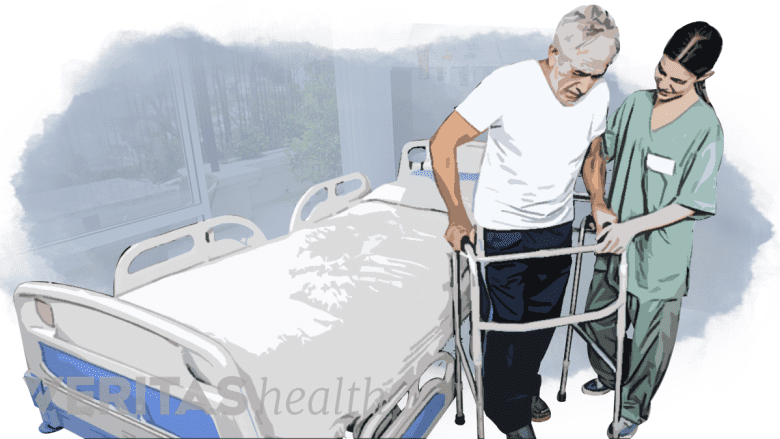Spine surgery may be recommended when three requirements are met:
- The pain is severe
- The person is finding it difficult to function in everyday activities of life
- The pain does not get better even after a 6 to12-week course of nonsurgical treatments.
Surgery for lower back pain is only done after the anatomical cause of the pain has been confirmed through an MRI scan or other imaging test.
It is almost always the patient’s decision to have back surgery, and only in rare situations is immediate surgery performed for low back pain.
In This Article:
Factors to Consider Before Back Surgery
There are many factors to consider before having lower back surgery, such as:
Lack of ability to function in everyday activities
Surgery is more likely to be recommended if the patient has limited ability to function in everyday life. For example:
- Inability to care for one’s young children.
- Inability to work.
- Difficulty and pain when walking up and down stairs, walking for more than a few minutes, or getting in and out of a chair
- Difficulty sleeping through the night due to high pain levels
If it is possible to complete daily life activities with manageable pain levels, and if the pain does not interrupt sleep or activity, doctors will usually recommend continuing with nonsurgical treatments.
See Considering Spine Surgery? 5 Things You Need to Know
Healing process and lifestyle
Surgery vs. nonsurgical care requires varying degrees of time commitment.
Healing and recovery after back surgery may take a long time, especially if it is a major surgery such as lumbar fusion or lumbar artificial disc replacement.
Alternatively, participating in physical therapy and nonsurgical treatments can also take a meaningful time commitment.
Every person will have a unique life and health situation, and it is important to consider the pro’s and con’s of how the healing process after surgery will affect the patient as as compared to continued non-surgical care.
The specific spine surgery
Some surgeries are considerably more invasive than others, and include lengthier healing periods and likelihood of pain during recovery. For example:
- A multi-level fusion surgery is a major surgery, whereas an endoscopic microdiscectomy is an outpatient surgery with relatively minimal downtime
- A one-level lumbar fusion for someone with diabetes and high blood pressure is a more significant surgery than for someone who has no health conditions
- A fusion done through the abdomen, called an ALIF, is usually easier to recover from than a PLIF or other approach done through the lower back
With modern surgical approaches and a skilled and experienced surgeon, many types of spine surgery can now be done with a minimally invasive approach, and the postoperative recovery period tends to be shorter.
Mental health and well-being
Several studies have indicated that mental and emotional well-being have a positive correlation to improvement and satisfaction after surgery.
Patients who feel more in control of their health report a more positive recovery and outcome after spine surgery.1Block AR. Demoralization, Patient Activation, and the Outcome of Spine Surgery. Healthcare (Basel). 2016;4(1)
Types of Lower Back Surgery
Decompression Surgeries
A lumbar decompression removes pressure on a nerve root in the lower spine, such as a herniated portion of a disc or a bone spur. There are two primary types of decompression for low back pain.
- Microdiscectomy or endoscopic discectomy – these are both minimally invasive and treat a lumbar herniated disc causing radicular leg pain (sciatica).
- Laminectomy to remove part of the layer of the bone or soft tissue compressing a nerve or multiple nerve roots. A laminectomy will typically be performed for lumbar spinal stenosis.
A decompression surgery can be performed with open or minimally invasive techniques with relatively small incisions, and minimal discomfort and recovery before returning to work or other activities. Most of these procedures are now being done as day surgery or with one overnight stay.
Lumbar spinal fusion

Lumbar fusion surgery stabilizes the spine by fusing adjacent vertebrae.
Fusion is done to eliminate motion at a painful motion segment in the spine, especially in the lower spinal segments that have the most motion, called the L4-L5 and L4-L5 segments.
The fusion sets up the anatomical conditions to enable the vertebrae to grow together, or “fuse”, into one long bone to stabilize and eliminate motion at that motion segment.
In the lumbar spine, fusion can be done from the back (posterior approach), the front (anterior approach), the side (lateral approach), or combined. Modern techniques, implants, navigation, and biologics have made the surgery more predictable with an easier recovery and return to normal activity and work.
The most reliable indications for lumbar spinal fusion include spondylolisthesis, fracture, instability, deformity, degenerative disc disease, and stenosis. Tumors and infections are also treated with fusion surgery, but these conditions are far less common.
SI joint fusion
For lower back pain caused by sacroiliac joint dysfunction, fusion of the sacroiliac joint is an option. The surgery for sacroiliac joint fusion is minimally invasive and patients return home the same day as the surgery.
Lumbar artificial disc
For some patients, lumbar disc replacement is a potential alternative to fusion surgery for symptomatic degenerative disc disease. This procedure has the potential for a quicker recovery and to maintain more spinal motion than lumbar fusion. Long-term data shows the outcomes are associated with a lesser risk of adjacent-level disease.2Zigler JE, Blumenthal SL, Guyer RD, Ohnmeiss DD, Patel L. Progression of Adjacent-level Degeneration After Lumbar Total Disc Replacement: Results of a Post-hoc Analysis of Patients With Available Radiographs From a Prospective Study With 5-year Follow-up. Spine (Phila Pa 1976). 2018;43(20):1395-1400. doi:10.1097/BRS.0000000000002647
Posterior motion devices
There are several surgical approaches designed to address specific conditions while preserving motion in the spine. For example, there are several minimally invasive surgical options treating lumbar spinal stenosis or mild degenerative spondylolisthesis that are less invasive than a fusion and easier to recover from.
Spinal cord stimulation
For people with chronic lower back pain, a small device can be surgically implanted near the spine that uses electrical impulses to disrupt the pain signals before they reach the brain. Spinal cord stimulation first involves a trial with the stimulator worn on a belt outside the body, and if the trial works then the patient may decide to have the device implanted.
This is not a complete list of surgical options. Several others exist or are in development. Newer technologies are being utilized today, such as robotic-assisted surgery that includes presurgical planning and guidance systems during the surgery.
Healing and Recovery After Back Surgery

Guided mobility training is important for recovery after spine surgery.
The recovery period after low back surgery depends on a number of factors, including the patient’s condition before the surgery, the extensiveness of the surgery, and the surgeon’s skill and experience. For example:
- A microdiscectomy or endoscopic discectomy for a lumbar herniated disc is considered minimally invasive, and the patient usually has no overnight hospital stay and recovery time is about a week. See Lumbar Microdiscectomy Recovery
- Posterior lumbar fusion postoperative care is typically an overnight hospital stay, slow and gradual return to everyday activities, and initial activity restrictions as the fusion sets up and grows in place during the 3 to 12 months following the surgery.
Physical therapy is almost always prescribed to rebuild strength, range of motion, and encourage healing.
The healthcare team instructs patients on the full postoperative recovery protocols, such as use of pain medications, a back brace or special beds, shower stools, or supportive pillows, and more to manage postoperative pain and encourage the healing process.
- 1 Block AR. Demoralization, Patient Activation, and the Outcome of Spine Surgery. Healthcare (Basel). 2016;4(1)
- 2 Zigler JE, Blumenthal SL, Guyer RD, Ohnmeiss DD, Patel L. Progression of Adjacent-level Degeneration After Lumbar Total Disc Replacement: Results of a Post-hoc Analysis of Patients With Available Radiographs From a Prospective Study With 5-year Follow-up. Spine (Phila Pa 1976). 2018;43(20):1395-1400. doi:10.1097/BRS.0000000000002647

